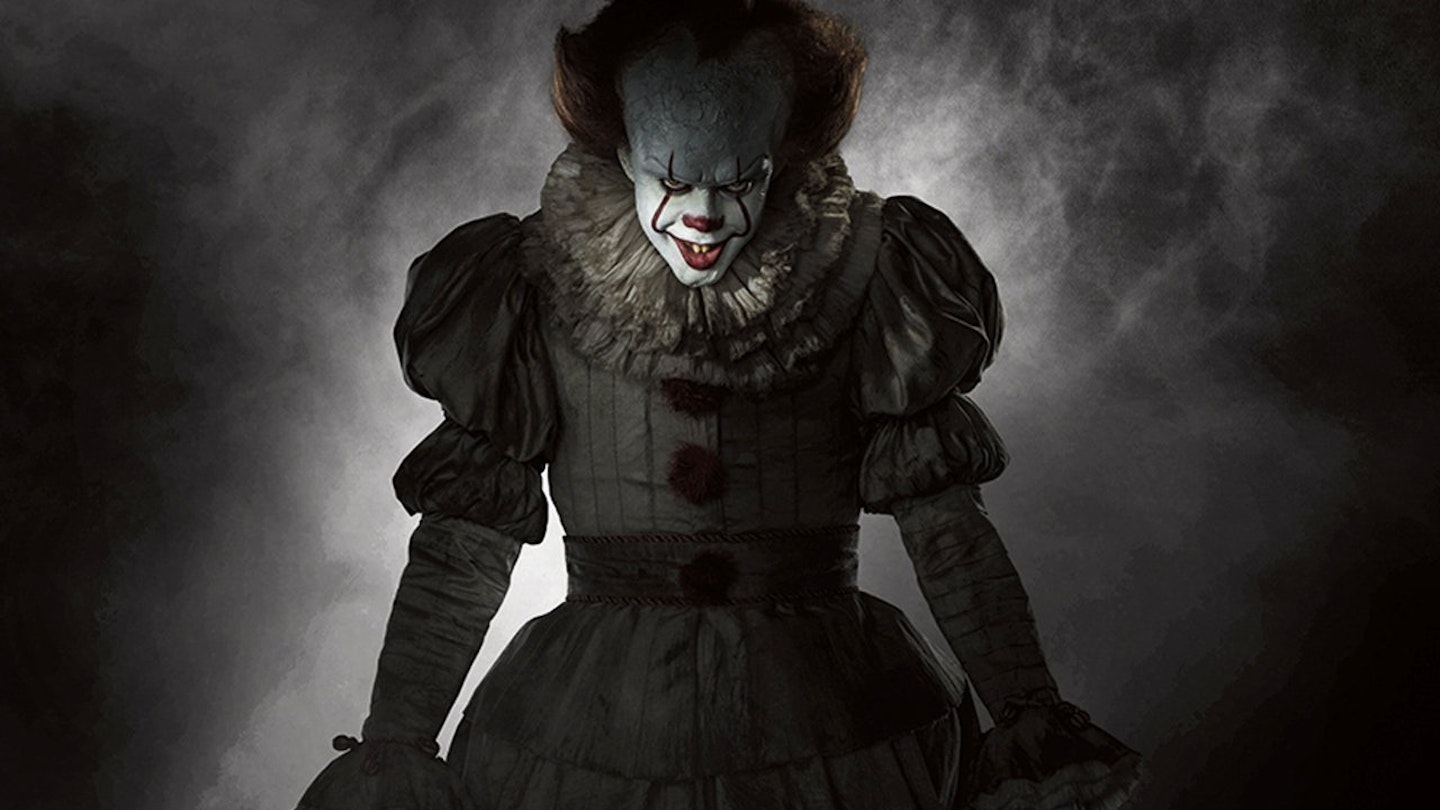"Coulrophobia", the fear of clowns, might seem like a peculiar complaint. What, after all, is scary about a guy in weird facepaint, pratting about in a circus ring or driving a car that's too small, all for the entertainment of delighted children? Well, for some people, everything, and films have long preyed on those fears. With Bill Skarsgård lurking around the corners of Andy Muschietti's new It adaptation as the truly terrifying Pennywise, we've cast our smeared-mascara'd eyes over ten of his cinematic predecessors – and one other...
(NB. We've opted for films only, so we know there's no Krusty, Twisty or Papa Lazarou. We didn't forget; we just counted them out.)
He (Lon Chaney)
He Who Gets Slapped (1924)
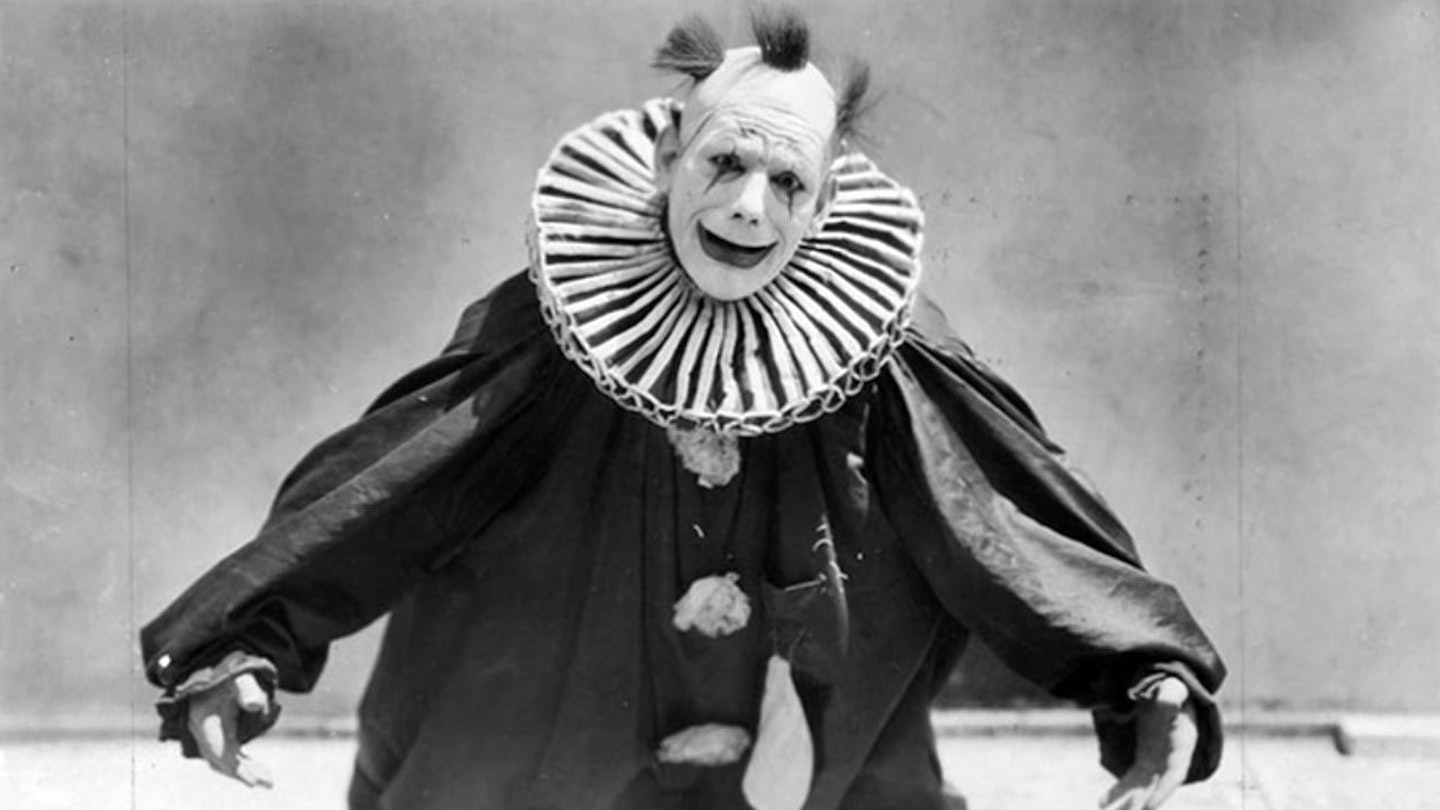
Before the early to mid-20th Century when they began to be seen primarily as children's entertainers, clowns were often portrayed as tragic. The 1892 opera Pagliacci, for example, features a clown character who murders his wife on stage when he learns she's been cheating on him. The silent He Who gets Slapped is a slice of grim melodrama along similar lines. Chaney plays a disgraced academic who becomes a circus clown as an act of self-humiliation: the centrepiece of his act is getting resoundingly beaten every night by his white-faced colleagues. Not a horror film per se, but that image isn't one you forget in a hurry.
Michael (Skip Martin)
Vampire Circus (1972)
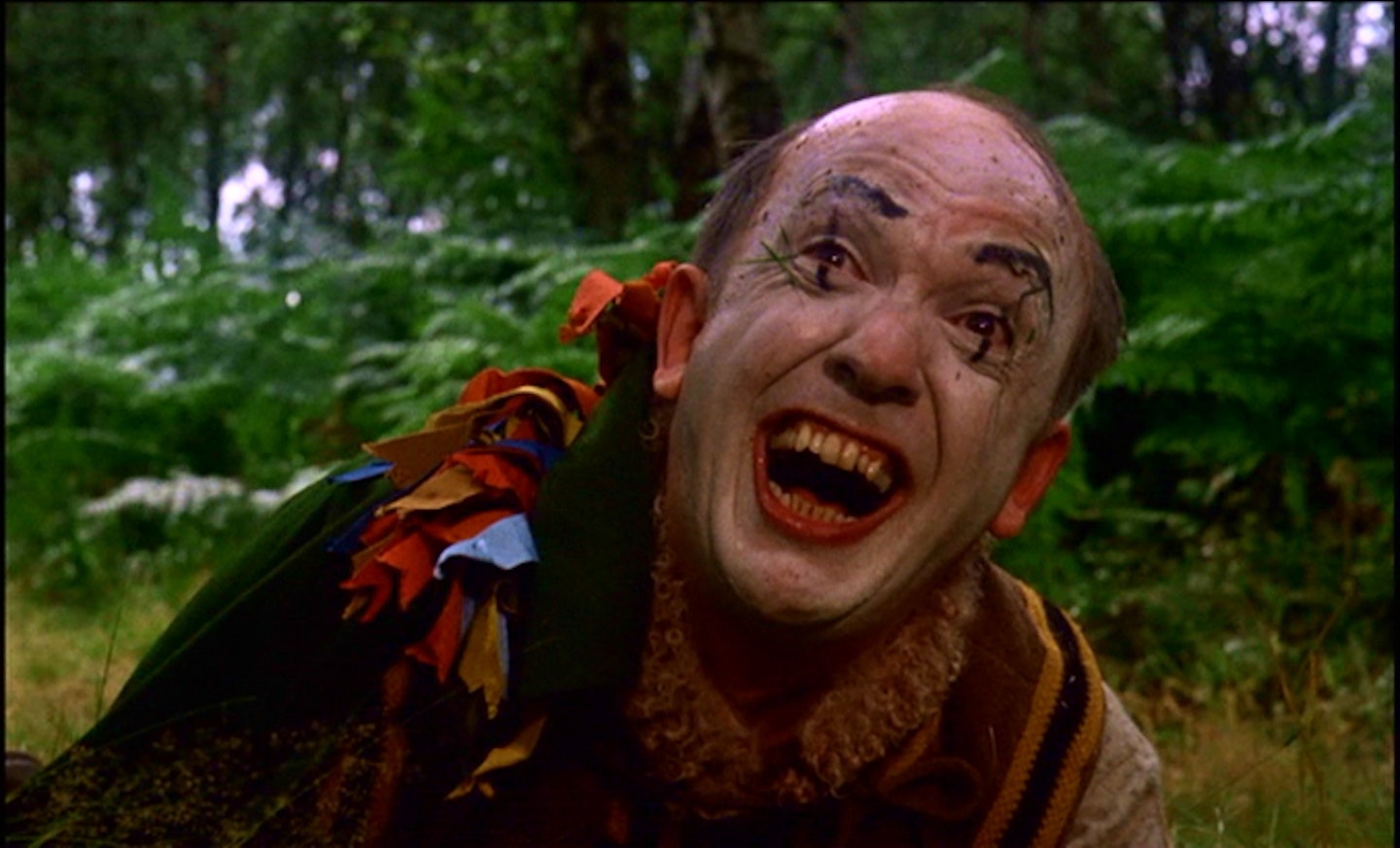
Hammer's flagship Dracula and Frankenstein franchises were ailing by the early '70s, but the studio was still capable of turning out strong standalones like Captain Cronos, Vampire Hunter and this. These days there's a kind of cosy, comfort-food nostalgia to much of Hammer's horror, but Vampire Circus, conversely, still has teeth. A vanguished vampire curses the Bavarian town of Stetl, and fifteen years after his death, the Circus of Nights rolls up, headed up by Adrienne Corri and her dwarf-clown henchman, Michael. His actual capering is a bit half-arsed, but this particular circus' agenda seems to be to worry the villagers as much as to entertain them. And at that he succeeds admirably, on several occasions, whether in the ring or lurking in a crypt.
Doll
Poltergeist (1982)
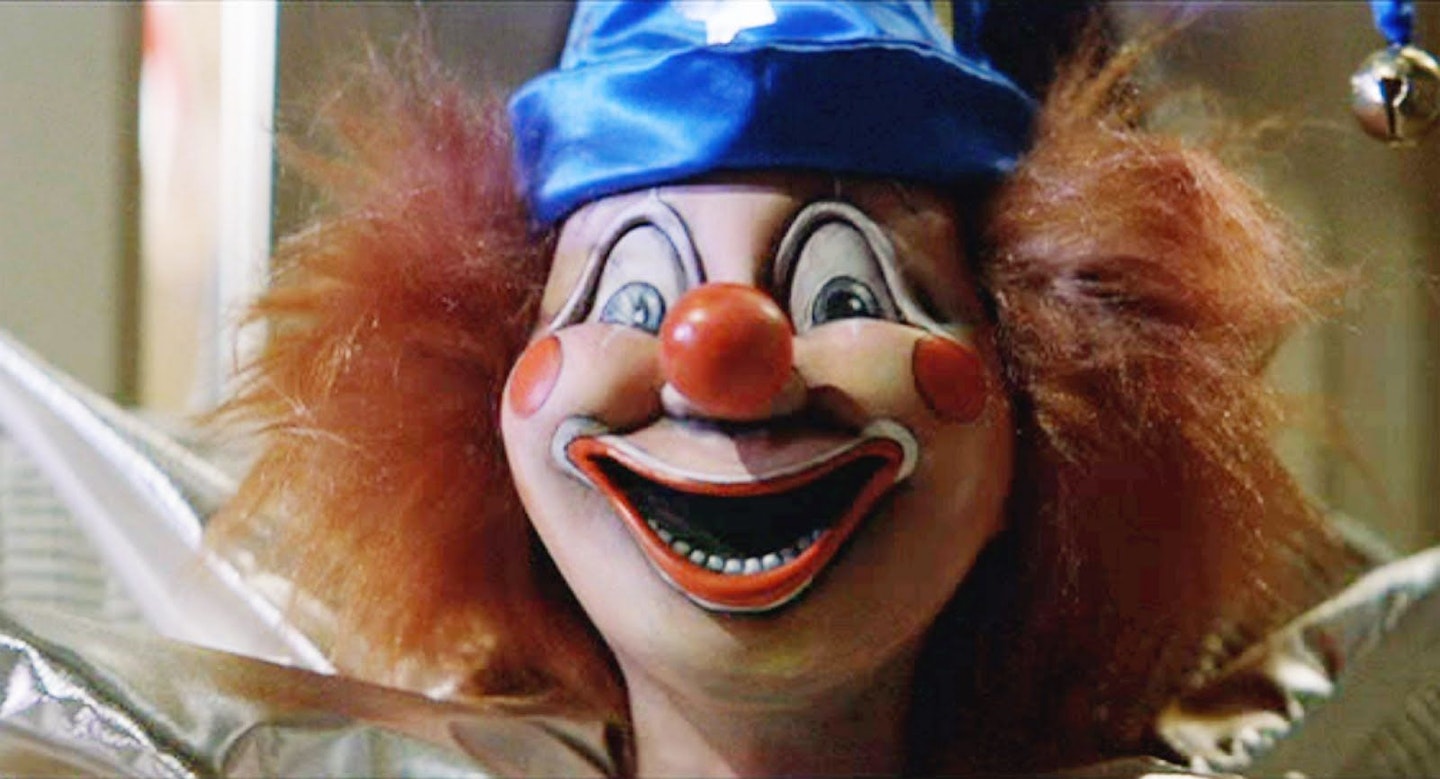
Here's the clown that freaked out a generation. It may arguably be where the modern notion of the frightening movie clown really begins: planting the notion that clowns are very much not fun indelibly in the heads of thousands of kids (Poltergeist, in the US, was only rated PG-13). Simplicity itself, the scene involves the young Robbie Freeling (Oliver Robbins) getting increasingly spooked from his position in bed by the doll that, a couple of hours ago in daylight, must have seemed perfectly innocuous. He tries to cover it with a jumper, but misses. Then when he looks again, it's gone. And then he checks under the bed... The 2015 remake witlessly tried to amp this scene up by adding loads more clown dolls. One was always enough.
Mervo (Tiny Tim)
Blood Harvest (1987)
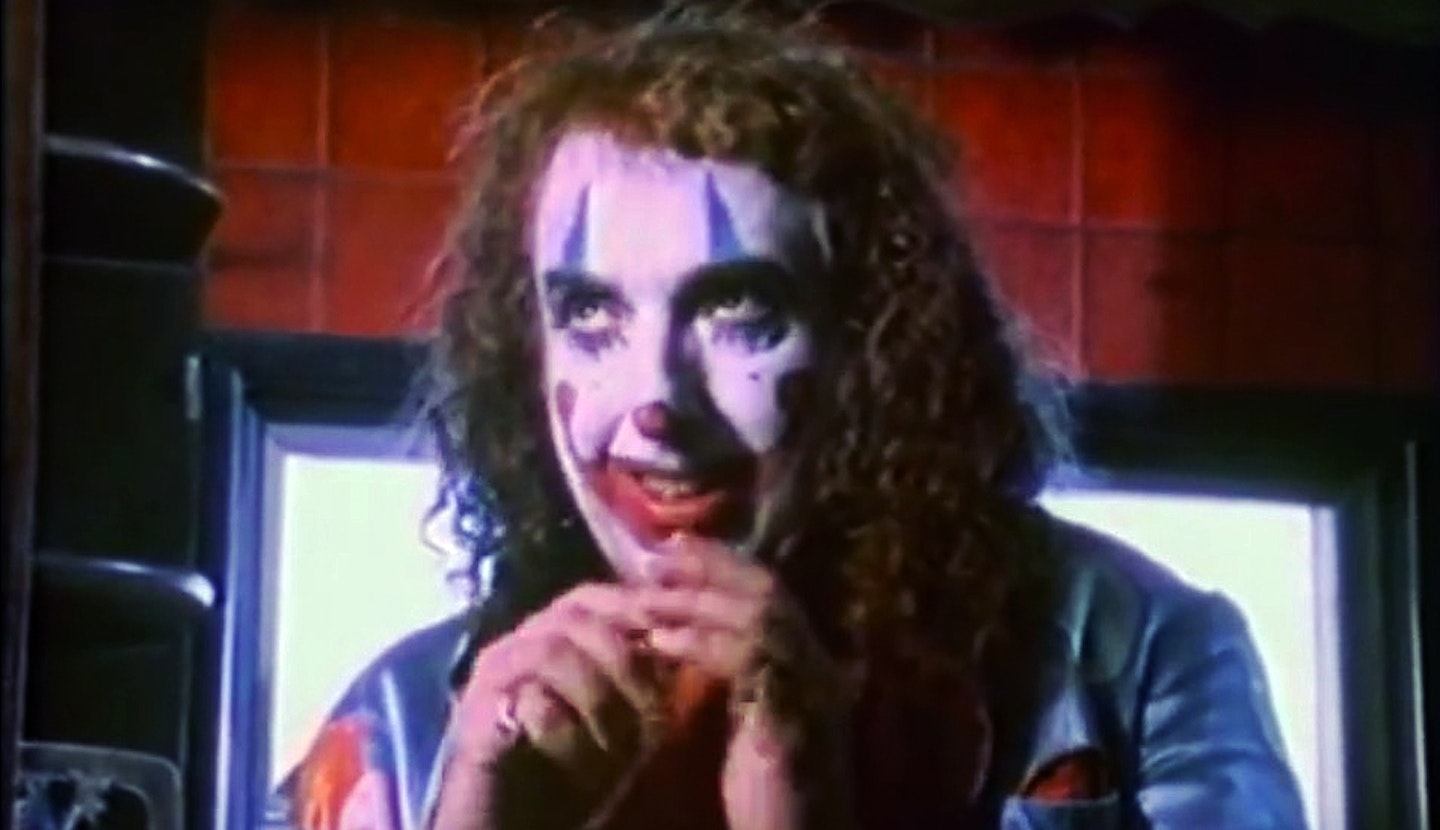
Remember that weird version of Tiptoe Through The Tulips that gets played a lot in Insidious? It's by the late American cult entertainer Tiny Tim, famous (where he was known at all) for his freakish ability to sing in that odd falsetto. Briefly popular in the late '60s, he'd pretty much faded back into obscurity by 1987, but a chance meeting with director Bill Rebane led to this, his only movie. A pretty hapless attempt to whip up something scurrilous to ride the '80s slasher movie craze, it's nevertheless earned some notoriety thanks solely to Tim, who plays the alarming Marvellous Mervo. As the song over the opening and closing credits informs us, he just wants to make the whole world laugh, even if the laugh's on him. [Spoiler] A twist reveals he isn't the villain we might have suspected, but he's no less disturbing for that.
Clown (John Leguizamo)
Spawn (1997)
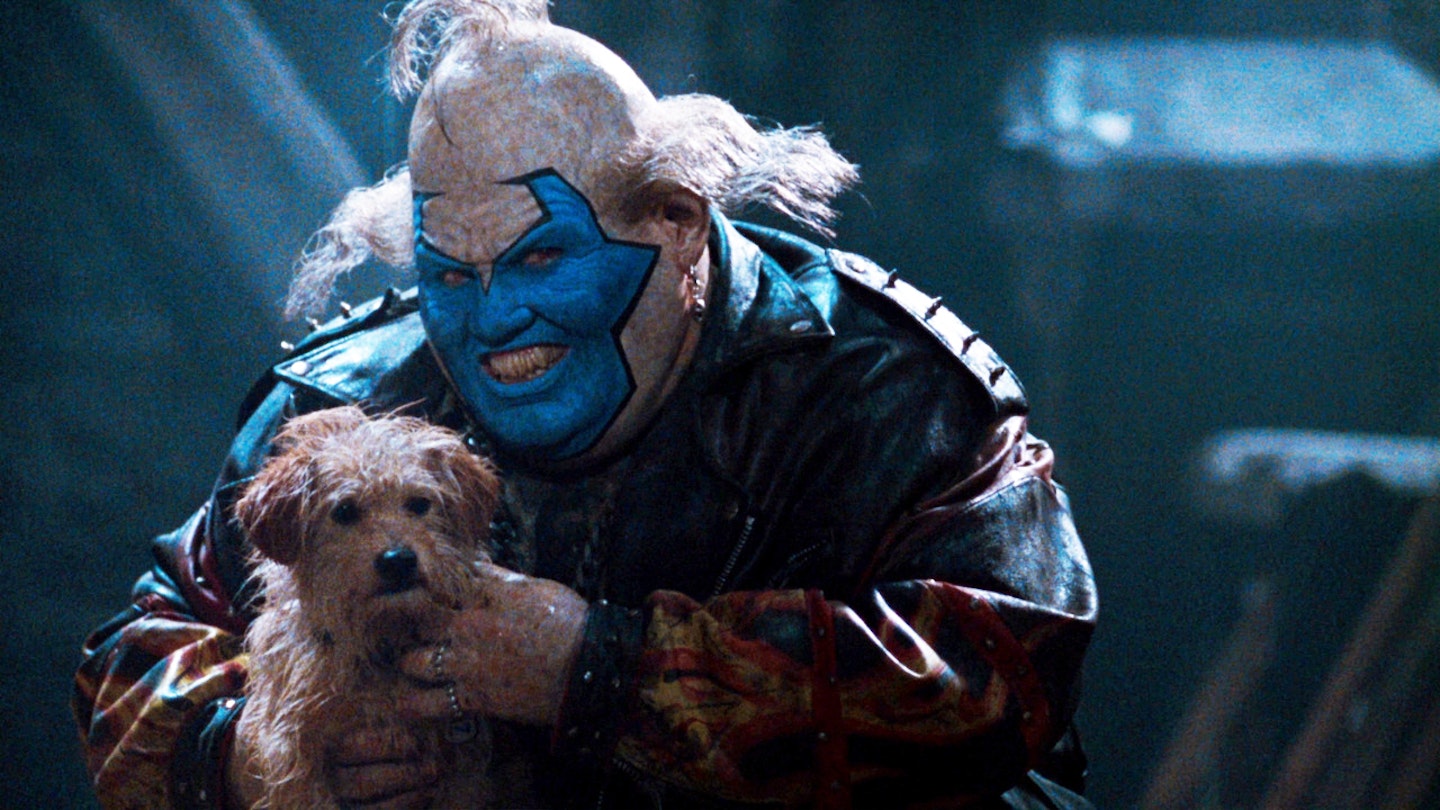
This is what a "dark superhero" movie looked like in the days before Blade and The Matrix. Today we can watch it with a sort of stunned disbelief, but to be fair, that was pretty much the reaction it got in 1997 too. But Leguizamo, at least, always seemed to be having fun. The Clown here is a demon tasked with keeping Al "Spawn" Simmons working to Hell's agenda. Why he chooses to take the form he does is unclear in narrative terms, although in Todd McFarlane's comics he's more obviously a caricature of real-life "killer clown" John Wayne Gacy. "I was a good clown, man," Leguizamo told The List recently. "I was like this tall. I had to squat through the entire thing. I had the craziest glutes for a while."
Captain Spaulding (Sid Haig)
House of 1000 Corpses (2003) & The Devil's Rejects (2005)
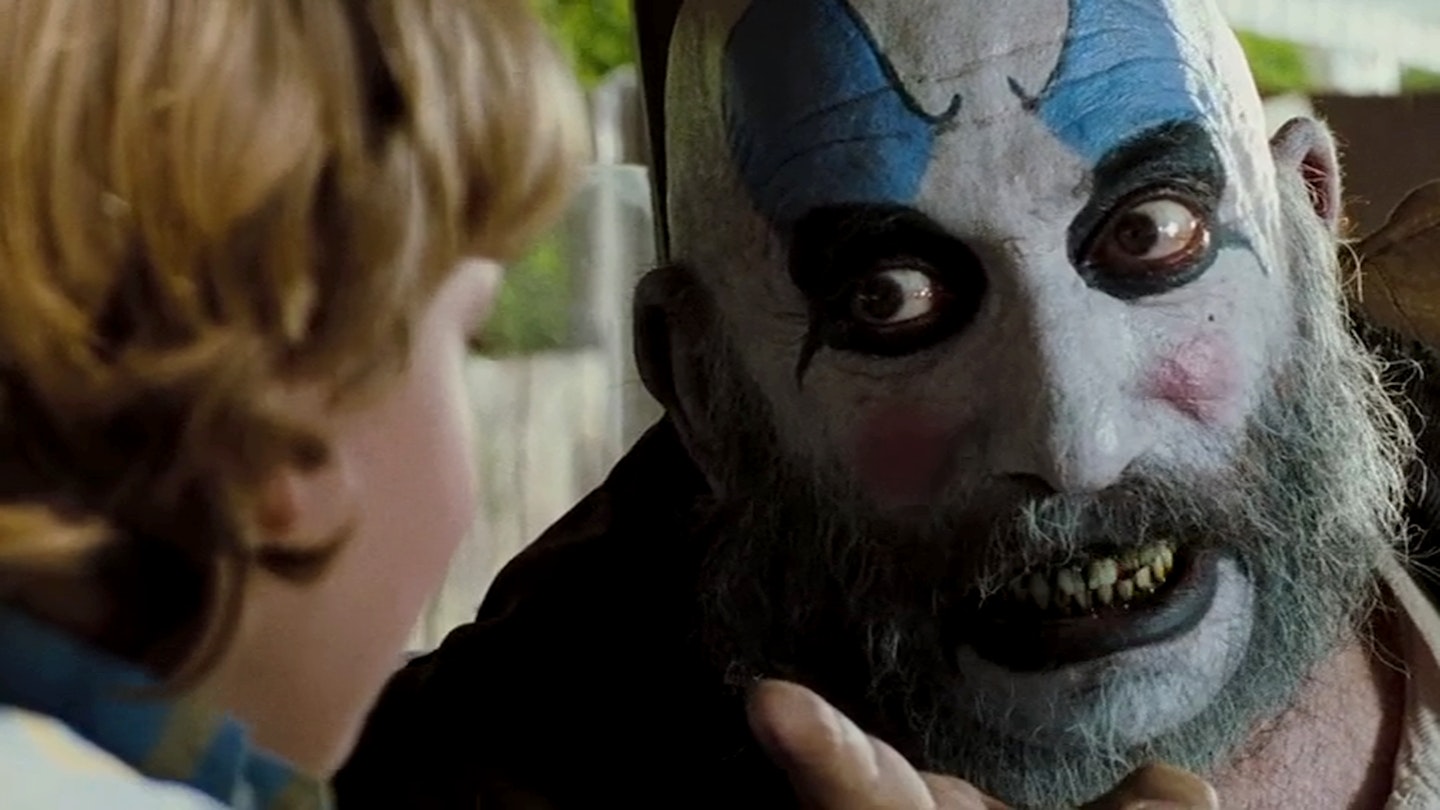
Rob Zombie pulled Sid Haig out of semi-retirement for his brace of scurrilous horrors, giving the actor a late-in-life signature role in the process. Spaulding, who rarely appears out of make-up, is the paterfamilias of the murderous Firefly family (who all nicked their pseudonyms from the Marx Brothers). Before he goes on the run, he's happily ensconsed running a trashy roadside "murder ride" attraction, where the murder is, to nobody's susprise but the visiting kids, perhaps less entertaining than advertised. He also does a nice sideline in delicious fried chicken. One of those characters that can go from jocose to sinister at the flip of a coin, he's not above terrorising little kids for his own amusement. "Don't you like clowns? Don't we make you laugh? Aren't we fucking funny?"
The Joker (Heath Ledger)
The Dark Knight (2008)
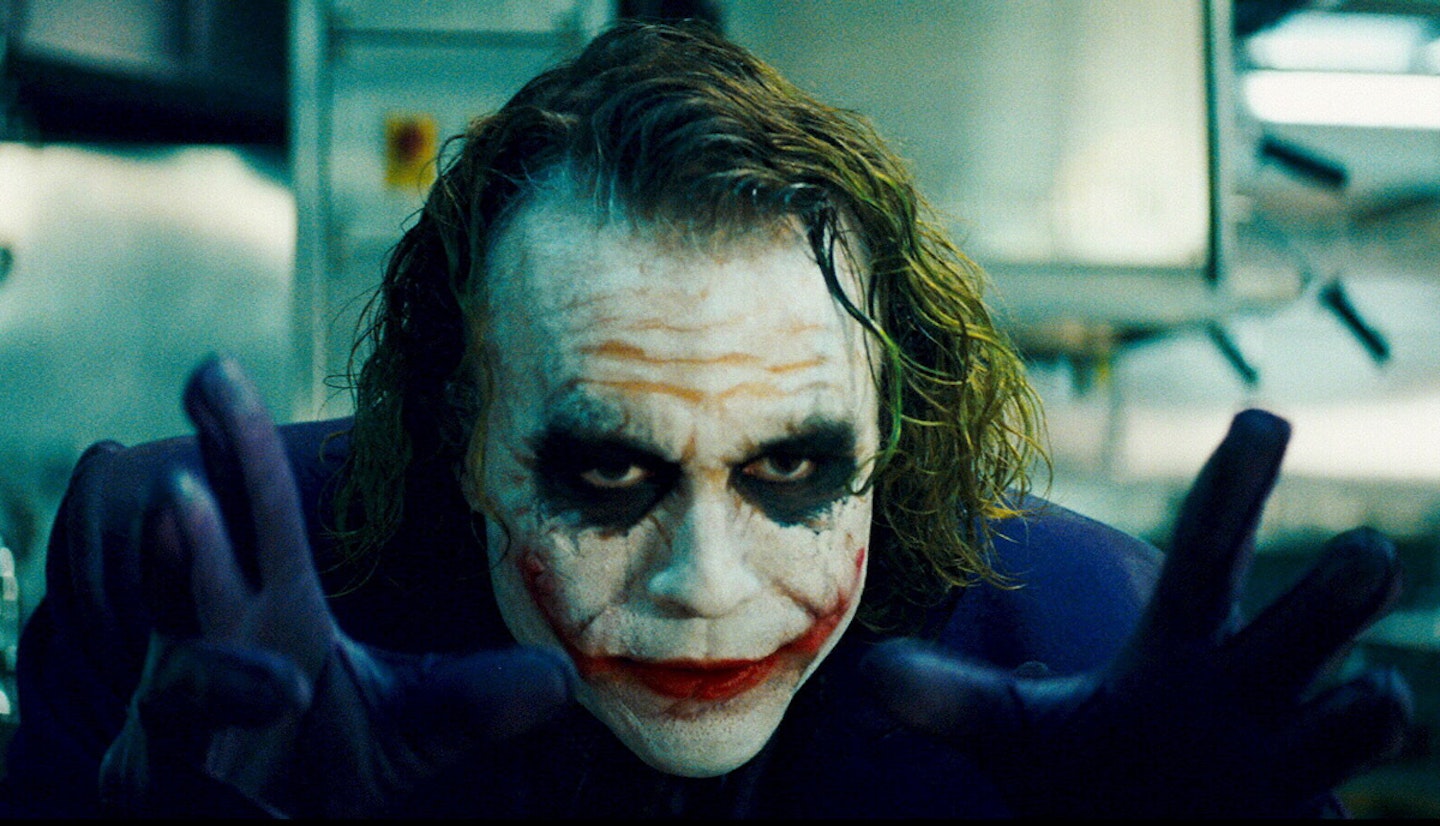
Take your own pick for the Clown Prince Of Crime, obviously. Ledger's live-action version and the Mark Hamill-voiced animated iteration give each other a run for their sinister money, while the '60s series' Cesar Romero is perhaps the weirdest, just because he's the silliest and most child-like. The character's comic-strip creators, Bill Finger, Bob Kane and Jerry Robinson, based him in part on the silent movie actor Conrad Veidt in 1928’s The Man Who Laughs: not quite a scary-clown role, but as near as dammmit.
Zombie Clown (Derek Graf)
Zombieland (2009)
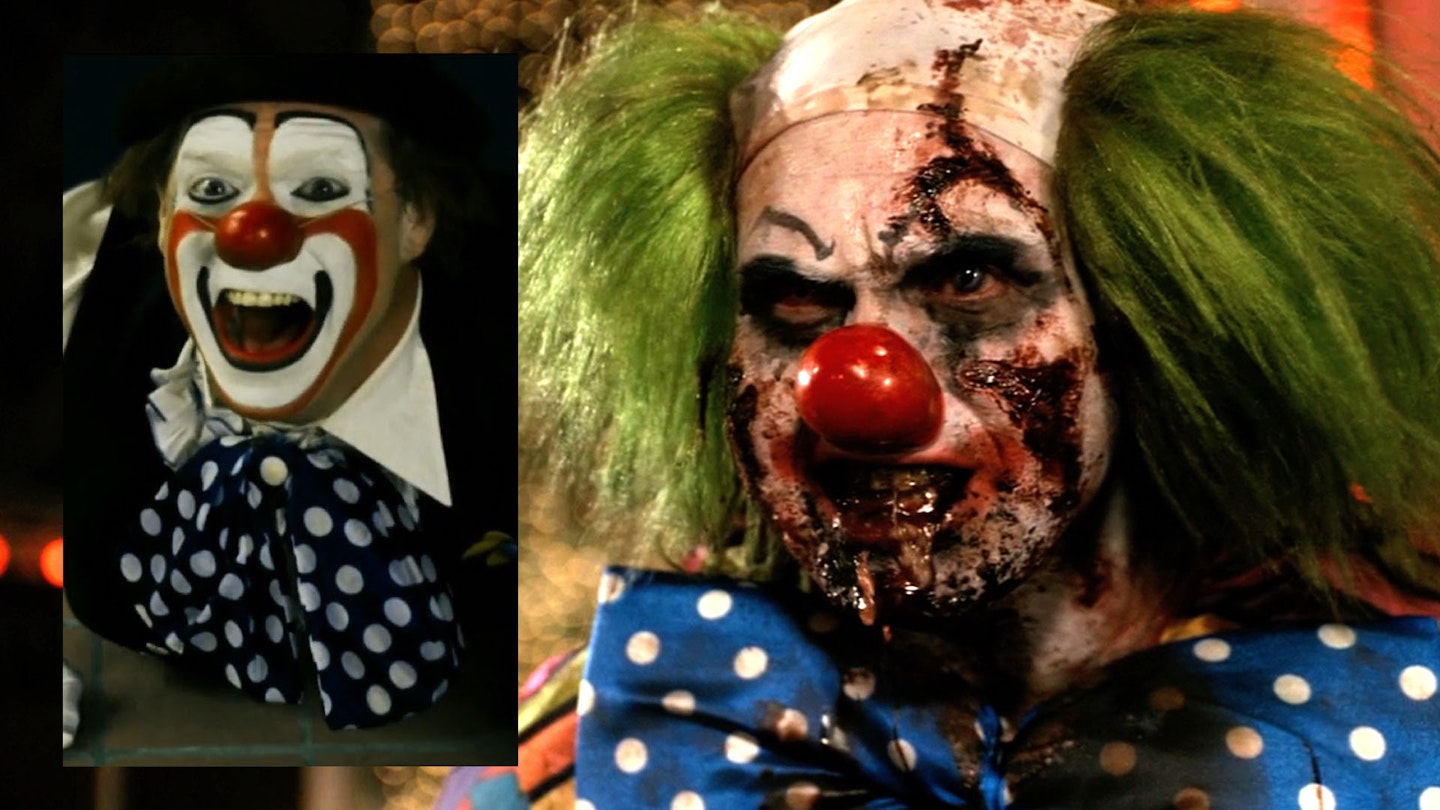
Two clowns for your buck in Ruben Fleischer's hilarious action zom-com. "Of course, it had to be a clown. Fuck this clown!" says Jesse Eisenberg, faced with Graf's colourful Bozo as a postscript to the film's climactic battle. But it's a callback to an earlier, brief, but for more disturbing scene in which Eisenberg explains that he "was always kind of phobic" while imagining a clown crawling and boggling at him under a bathroom stall. It's "the thing I fear more than anything," he tells the audience. "Yes, even more than zombies. Fucking clowns!"
Grimaldi
The Casebook of Eddie Brewer (2012)
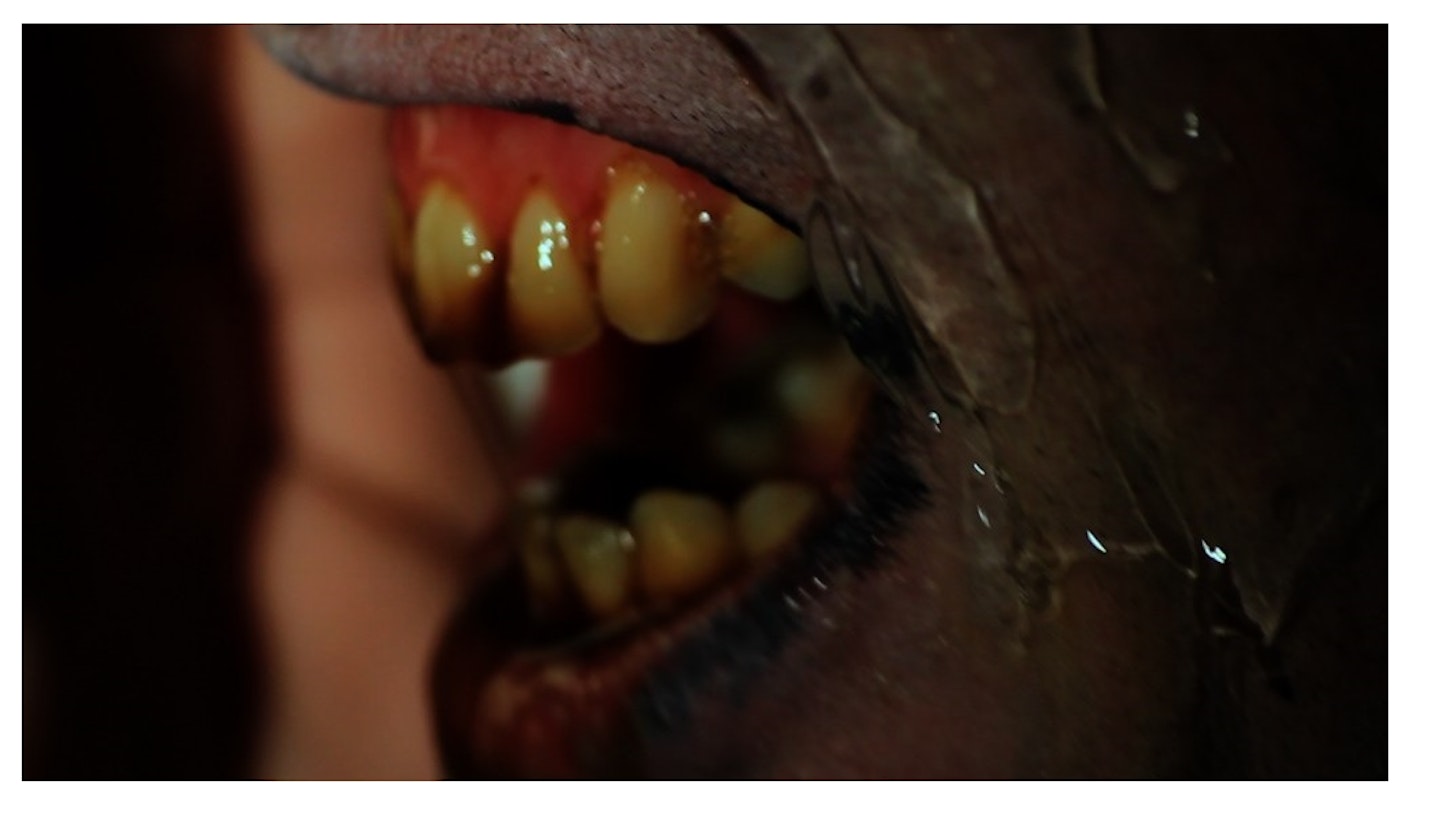
Andrew Spencer's low-budget British indie takes the interesting tack of employing a clown we never actually see. "Grimaldi" is the name taken by the demon trying to ingratiate itself with young Erin Connolly. He's taken his moniker from a famous real-life clown from the 18th Century. "This thing wants to communicate with this child in a way that’s child-friendly," Spencer told us. "But because it’s a bit disturbed and it’s out of kilter with our times, unfortunately it picks a thing that kids now don’t find friendly at all. We can all imagine a clown, so we don’t need to show him. We’ve all got a different clown in our mind." The real Grimaldi himself once joked, "I am grim all day, but I make you laugh at night..."
Kent (Andy Powers)
Clown (2014)

Before this year's Spider-Man: Homecoming, director Jon Watts made the excellent indie Cop Car. But before even Cop Car, there was this. Weirdly, you can see hints of his Spider-Man fandom in it – or perhaps it's a coincidence, but the fact is that Clown involves a guy getting symbiotically taken over by his evil costume, almost exactly a la Venom. Andy Powers plays the unfortunate Kent McCoy, who discovers not only that he can't remove the suit, but that it's possessed by an ancient Northern–European child-eating demon called The Clöyn.
Pennywise (Tim Curry)
It (1990)
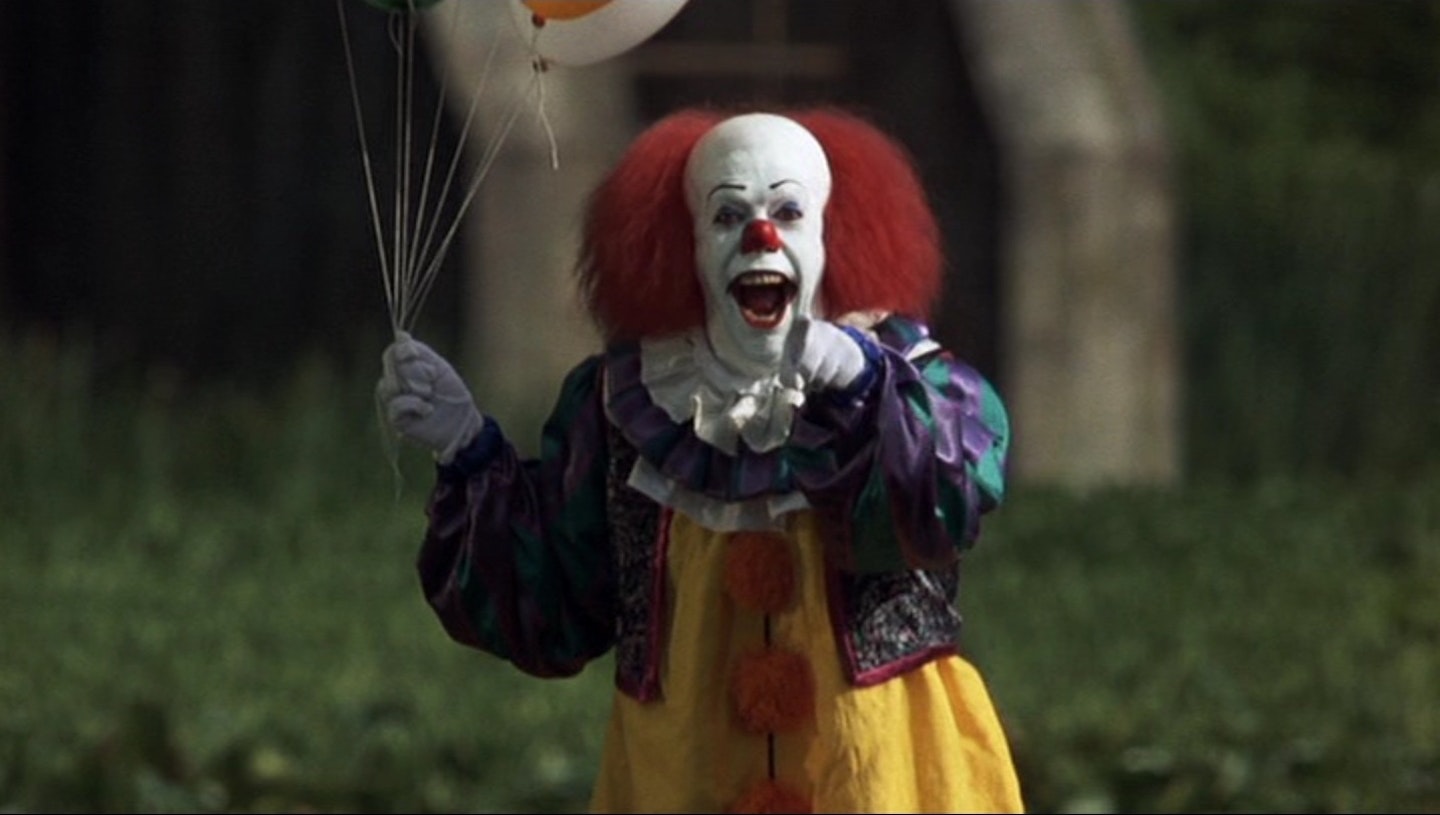
And of course, there's Tim Curry: the first screen Pennywise in Tommy-Lee Wallace's 1990 It. This breaks our own rules because it's a three-hour TV miniseries rather than a film – but you'd complain if we didn't include him. And we'd feel bad anyway. As an adaptation of the character as described in Stephen King's novel, Curry isn't physically all that accurate. But the performance more than makes up for the look. "Pennywise always understood what each character was scared of, and provided it," Curry told The Guardian recently. "I could see [when I got the script] what fun it would be to be that scary. There’s the classic scene where little Georgie floats his paper boat down the gutter and puts his hand down to try and get it back, and is grabbed by Pennywise, who says: "Down here we float ..." The boy playing Georgie [Tony Dakota] yanked his hand away and said, "You’re scaring me!" I said, "I’m sorry, I’m supposed to."
It is in cinemas now. Click here for Empire's review.
